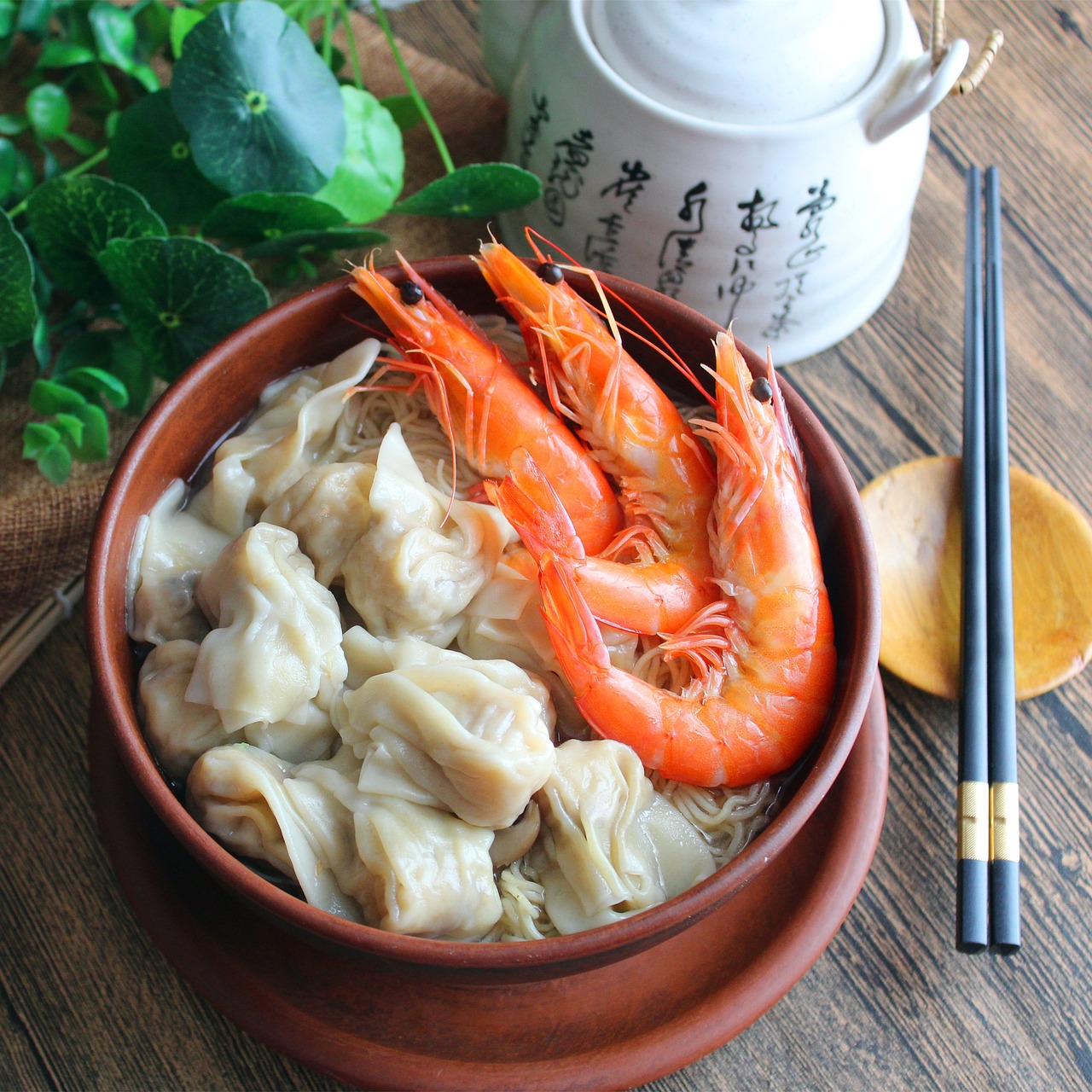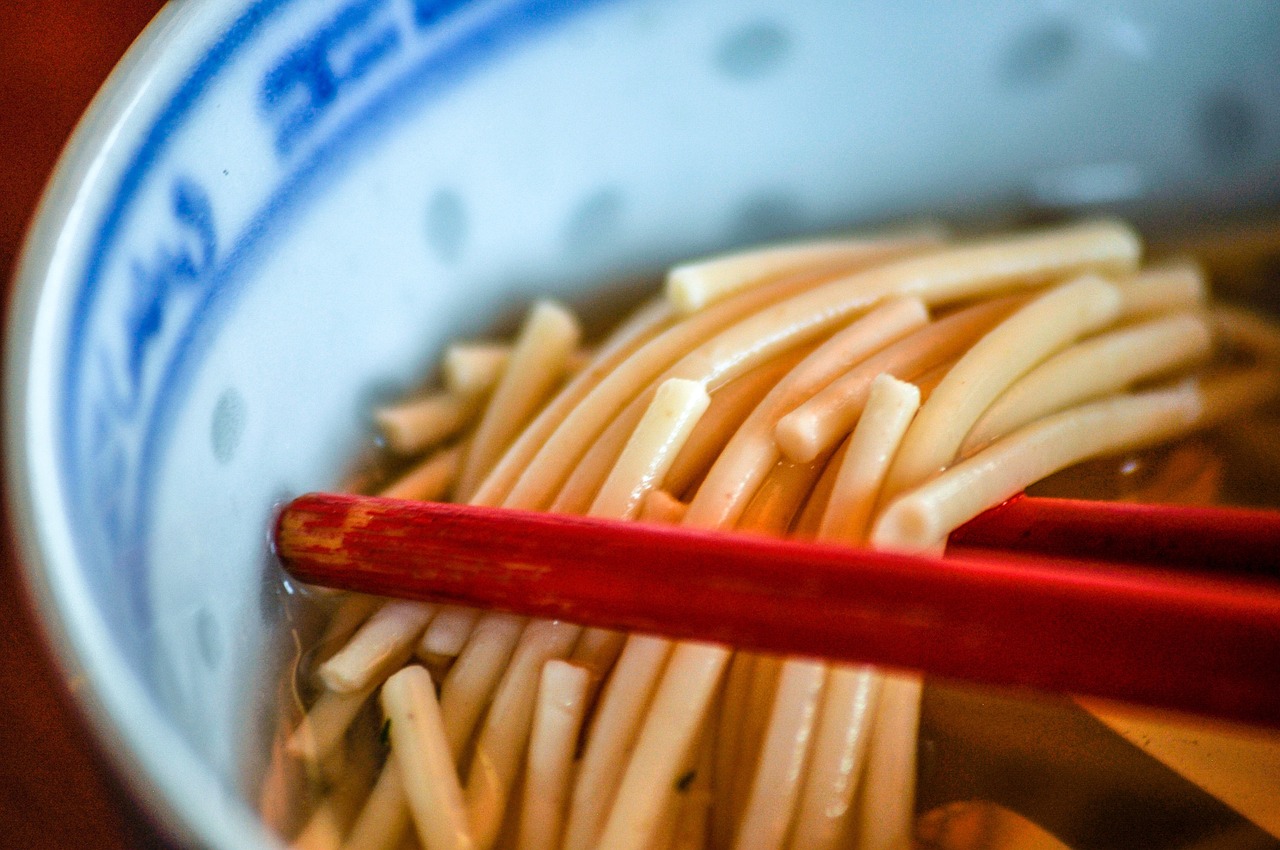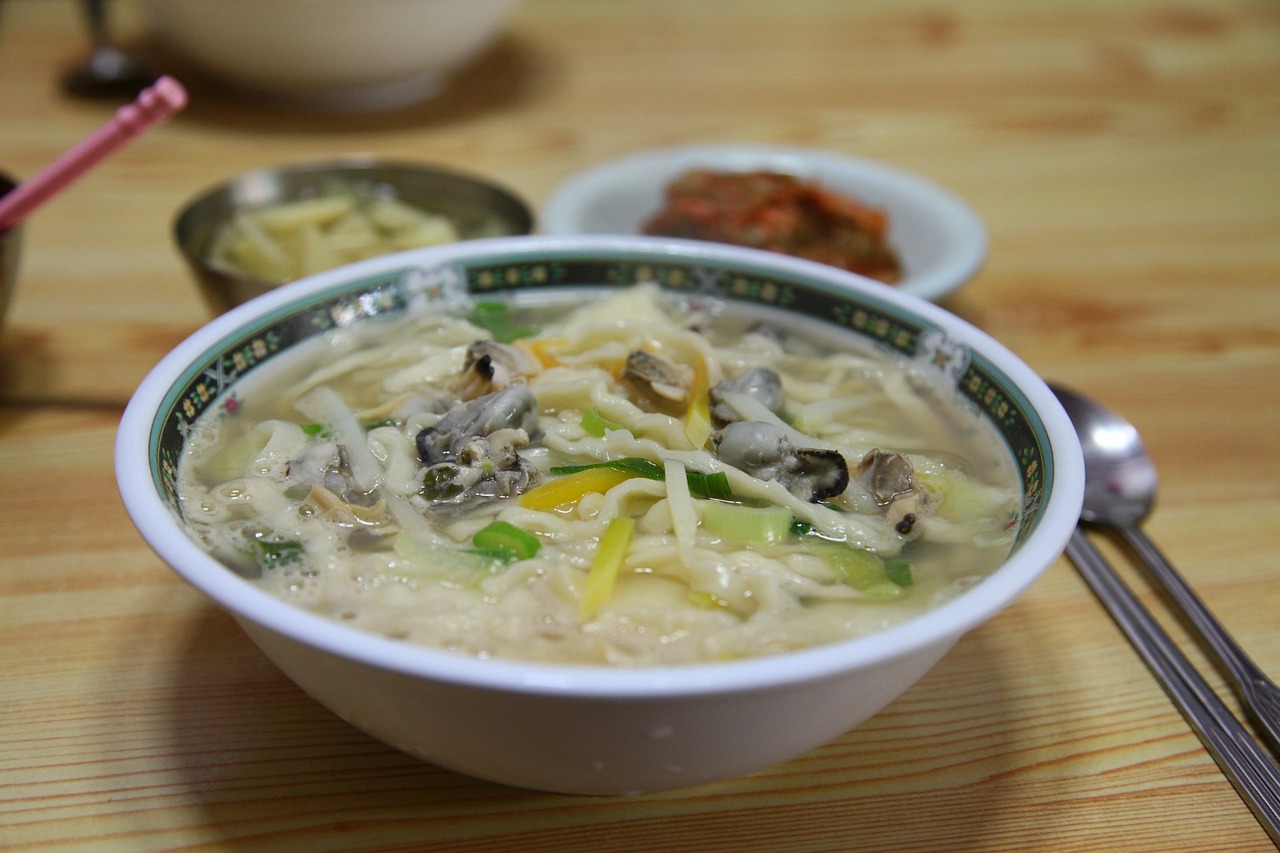Zhajiangmian: Chinese Noodles with Ground Pork and Soybean Paste

When it comes to comfort food with a burst of umami flavors, Zhajiangmian stands out as a beloved dish in Chinese cuisine. This classic noodle dish combines the richness of savory soybean paste with the succulent taste of seasoned ground pork, creating a symphony of tastes and textures that delights the palate. Whether you're a fan of traditional Chinese fare or looking to explore new culinary horizons, Zhajiangmian offers a satisfying and flavorful experience that is sure to leave you craving for more.
Origin and History
Exploring the roots and historical significance of Zhajiangmian takes us on a journey back in time to ancient China, where the origins of this beloved dish can be traced. Legend has it that Zhajiangmian has been enjoyed for centuries, evolving from a humble street food to a staple in Chinese cuisine. The name "Zhajiangmian" itself translates to "fried sauce noodles," reflecting the traditional method of stir-frying soybean paste with ground pork to create a rich and flavorful sauce.
One can imagine the bustling streets of old Beijing, where vendors skillfully prepared steaming bowls of Zhajiangmian, filling the air with enticing aromas that drew in passersby. As time passed, the dish gained popularity not only for its delicious taste but also for its ability to satisfy hunger and comfort the soul. Its simplicity and heartiness made it a favorite among families, who passed down recipes through generations, preserving the essence of Zhajiangmian.
As culinary practices evolved and regional influences seeped into Chinese cuisine, Zhajiangmian underwent subtle changes to suit different tastes and preferences. Each variation told a story of local ingredients, cooking techniques, and cultural heritage, adding layers of complexity to the dish's history. Despite these adaptations, the core elements of Zhajiangmian remained constant, symbolizing unity in diversity and the enduring appeal of traditional flavors.
To truly appreciate Zhajiangmian is to understand its place in Chinese culinary traditions, where food is not just sustenance but a reflection of community, identity, and shared experiences. The dish's enduring popularity and widespread availability speak to its timeless appeal, transcending generations and geographical boundaries. Whether enjoyed in a bustling restaurant or homemade with love in a cozy kitchen, Zhajiangmian continues to captivate taste buds and hearts alike, embodying the rich tapestry of Chinese gastronomy.
Ingredients and Preparation
When it comes to preparing the delectable dish of Zhajiangmian, the key lies in sourcing the right ingredients and following a precise cooking method. Let's delve into the components that make this dish a savory delight and the step-by-step process to create an authentic culinary experience.
Ingredients:
- Noodles: The foundation of Zhajiangmian is the noodles, typically thick wheat noodles that provide a chewy texture to the dish.
- Ground Pork: The savory flavor of seasoned ground pork adds depth to the soybean paste sauce.
- Soybean Paste: A crucial element in Zhajiangmian, soybean paste brings a rich umami flavor to the dish.
- Vegetables: Commonly used vegetables include cucumber, radish, and bean sprouts for a refreshing crunch.
- Seasonings: Garlic, ginger, soy sauce, and sugar are essential for enhancing the flavors of the dish.
- Oil: Sesame oil is often used for stir-frying the ingredients and imparting a nutty aroma.
Preparation:
- Cook the noodles according to the package instructions until al dente, then rinse with cold water to prevent sticking.
- In a hot pan, stir-fry the ground pork with garlic and ginger until browned and fragrant.
- Add the soybean paste to the pork mixture and cook until the flavors meld together.
- Toss in the vegetables and seasonings, stirring well to combine all the ingredients.
- Plate the cooked noodles and top them with the savory Zhajiangmian sauce, garnishing with fresh vegetables.
The art of preparing Zhajiangmian lies in the balance of flavors and textures, where each ingredient plays a crucial role in creating a harmonious culinary experience. By following the traditional recipe and adding your unique touch, you can savor a bowl of Zhajiangmian that captures the essence of Chinese cuisine.
Variations and Regional Differences
When it comes to Zhajiangmian, the variations and regional differences add a fascinating layer of diversity to this beloved Chinese dish. Each province in China puts its own unique spin on the traditional recipe, resulting in a culinary adventure that showcases the country's rich gastronomic heritage. From the type of noodles used to the choice of toppings and seasonings, every region offers a distinctive take on Zhajiangmian that reflects local flavors and preferences.
In Beijing, the birthplace of Zhajiangmian, the dish is typically made with thick wheat noodles, **daoxiaomian**, which provide a hearty base for the flavorful sauce. The soybean paste used in Beijing-style Zhajiangmian tends to be on the sweeter side, balancing the savory notes of the ground pork. Toppings like **shredded cucumber and radish** add a refreshing crunch to the dish, enhancing its textural contrast.
On the other hand, in the southern province of **Shandong**, Zhajiangmian takes on a spicier profile, with the addition of **chili oil** and **pickled vegetables** for a tangy kick. The noodles used in Shandong-style Zhajiangmian are often thinner and more delicate, allowing the bold flavors of the sauce to shine through.
Heading further south to **Sichuan**, known for its fiery cuisine, Zhajiangmian gets a numbing and spicy makeover with the incorporation of **Sichuan peppercorns** and **chili bean paste**. The resulting dish is a flavor explosion that tingles the taste buds and leaves a lasting impression of Sichuan's culinary prowess.
Meanwhile, in **Taiwan**, Zhajiangmian is often served with **minced garlic and scallions**, adding a fragrant aroma to the dish. The use of **thin wheat noodles** creates a lighter version of Zhajiangmian that is popular among Taiwanese locals and visitors alike.
Whether you prefer the traditional Beijing-style Zhajiangmian or enjoy exploring the regional variations across China, each version offers a unique culinary experience that celebrates the country's diverse culinary landscape. From bold and spicy to light and fragrant, Zhajiangmian's adaptability makes it a versatile dish that caters to a wide range of flavor preferences.
Cultural Significance
When exploring the of Zhajiangmian in Chinese cuisine, one cannot overlook its deep-rooted connection to the country's rich culinary heritage. Originating in Beijing, Zhajiangmian has evolved over centuries to become a beloved comfort food enjoyed by people from all walks of life. Its preparation method and ingredients reflect the essence of traditional Chinese cooking techniques, passed down through generations.
Moreover, Zhajiangmian holds a symbolic value in Chinese social gatherings and celebrations, symbolizing unity, prosperity, and togetherness. The act of sharing a steaming bowl of Zhajiangmian with family and friends signifies harmony and closeness, reinforcing bonds and fostering a sense of community. In many households, preparing Zhajiangmian is not just about nourishment but also about honoring customs and traditions.
Furthermore, the cultural significance of Zhajiangmian extends beyond its culinary appeal to encompass its role in Chinese folklore and storytelling. The dish often features in myths and legends, showcasing its enduring presence in the collective imagination of the Chinese people. Its flavors evoke memories of home-cooked meals and festive occasions, making it a staple in the cultural tapestry of the nation.
To truly appreciate the cultural significance of Zhajiangmian, one must understand the values it embodies – respect for heritage, appreciation of flavors, and the joy of sharing a meal with loved ones. Whether enjoyed in a bustling street market or a cozy family kitchen, Zhajiangmian encapsulates the essence of Chinese culinary traditions, making it a cherished dish that transcends time and borders.
Serving and Enjoying Zhajiangmian
When it comes to serving and enjoying Zhajiangmian, there are a few key tips that can elevate your dining experience and truly capture the essence of this delicious Chinese dish.
First and foremost, ensure that your Zhajiangmian is served hot and fresh. The steam rising from a piping hot bowl of noodles can enhance the aroma and make each bite more satisfying.
For garnishing, consider sprinkling some thinly sliced green onions on top of the noodles. Not only does this add a pop of color, but it also imparts a refreshing flavor that complements the rich and savory sauce.
When it comes to enjoying Zhajiangmian, don't be afraid to mix the noodles and sauce thoroughly before taking a bite. This allows the flavors to meld together, creating a harmonious taste experience with each mouthful.
To complement the robust flavors of Zhajiangmian, consider serving it with a side of pickled vegetables or kimchi. The tanginess of these side dishes can provide a nice contrast to the savory and meaty notes of the noodles.
Pairing Zhajiangmian with a cold beverage like iced tea or a light lager can help cleanse your palate between bites and enhance the overall dining experience.
Lastly, remember that Zhajiangmian is a dish best enjoyed with good company. Whether you're sharing it with family or friends, the communal aspect of dining together adds an extra layer of enjoyment to the meal.



 HazalVardal
HazalVardal 





